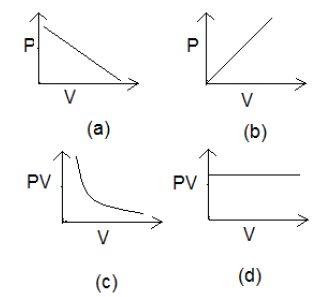Fully solved Chemistry MCQ Test Series (Set-3) exclusively helpful for preparing IITJEE (JEE Main), NEET-UG, AIPMT, COMEDK, EAMCET, KIITEE, VITEEE, OJEE, WBJEE, all Engineering and Medical Joint Entrance Exams, Dental Entrance Exams, MBBS Admission Test, and other courses.
Answer 25: (d). Answer 26: (d).
States of Matter (JEE / NEET Syllabus):
Gaseous State: Intermolecular Forces; Thermal Energy; Intermolecular Forces vs Thermal Interactions; The Gaseous State; The gas Laws; Boyle’s Law; Charle’s Law; Gay Lussac’s Law; Avogadro’s Law; Ideal Gas Equation; Kinetic Molecular Theory of Gases; Dalton’s Law of Partial Pressure; Graham’s Law of Diffusion; Maxwell-Boltzmann Distribution of Molecular Speeds; Behaviour of Real Gases; Ideal Gas Equation; Kinetic Energy and Molecular Speeds; Deviation from Ideal behaviour; Equation of State for Real Gases (van der Waals’ Equation); Compressibility factor; Liquefaction of Gases; Critical Temperature.
Liquid State: Vapour Pressure; Surface Tension; Viscosity.
Solid State: Classification of Solids; Classification based on Nature of Intermolecular Forces; Isotropy and Anisotropy; Crystal Lattice; or Space Lattice; Properties of Solids; Unit Cell; Calculation of number of atoms in a unit cell; Crystal systems; Designation of Planes in Crystals - Miller Indices; Close Packed Structures and Types of Crystal; Crystallography and X-Ray diffraction; Calculation of Packing Efficiency in FCC, CCP, BCC and in simple Cubic Unit Cell; Imperfections or Defects in Solid State; Applications of p-Type, n-Type Semiconductors
Medical and Engineering Entrance Exam Preparation Guide
Chemistry Guide: States of Matter (Gaseous, Liquid, Solid)
MCQ Test Series with Solutions – Set 3 (Q. No. 21-30)
Question 21: Which defect causes decrease in the density of a crystal?
a. Frenkel
b. Schottky
c. Interstitial
d. F-centre
Question 22: The surface tension of which of the following liquid is maximum?
a. C2H5OH
b. CH3OH
c. H2O
d. C6H6
Question 23: Solid CO2 is an example of –
a. Ionic crystal
b. Covalent crystal
c. Metallic crystal
d. Molecular crystal
Question 24: Select the correct order of the following temperatures: (A) Boyle temp. (B) Critical temp. (C) Inversion temp.
a. A > C > B
b. B > A > C
c. A > B > C
d. C > A > B
Question 25: Tungsten carbide (WC) is –
a. Substitutional solid used for making soft utensils
b. Substitutional solid used for making cutting tools
c. Interstitial solid used for making soft utensils
d. Interstitial solid used for making cutting tools
Question 26: The respective speeds of five molecules are 2, 1.5, 1.6, 1.6 and 1.2 km/sec. The most probable speed in km/sec will be:
a. 2
b. 1.58
c. 1.6
d. 1.31
Question 27: Which of the following is not the property of solids –
a. Solids are always crystalline in nature
b. Solids have good density and less compressibility
c. Solids diffuse very slowly
d. The volume of solids is fixed
Question 28: Viscosity is the property of:
a. Liquids
b. Gases
c. Solids
d. All of these
Question 29: Each of the following solids show, the Frenkel defect, except –
a. ZnS
b. AgBr
c. Agl
d. KCl
Question 30: An alloy of copper, silver and gold is found to have copper constituting the ccp lattice. If silver atoms occupy the edge centres and gold present at body centre, the alloy has a formula –
a. Cu4Ag2Au
b. Cu4Ag4Au
c. Cu4Ag3Au
d. CuAgAu
States of Matter - Gaseous, Liquid, Solid
Solutions of Chemistry MCQ Test Series – Set 3 (Q. No. 21 – 30)
Answer 21: (a). Answer 22: (c).
Answer 23: (d) Hint: Due to rapid or suddenly cooling of the liquid generate the amorphous solid. Rubber, Glass, Plastic, Starch etc. are examples of amorphous solids.
Answer 24: (d)
Answer 25: (d). Answer 26: (d).
Answer 27: (a) Hint: Wax is an example of molecular crystal.
Answer 28: (a, b). Answer 29: (d). Answer 30: (c).
States of Matter (Gaseous, Liquid and Solid) - More Practice Questions












